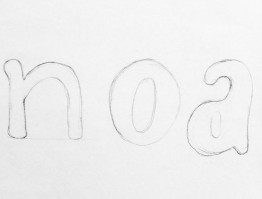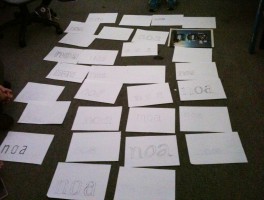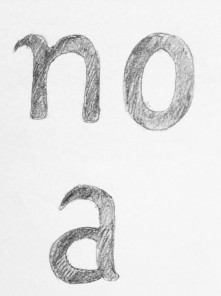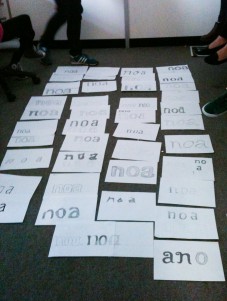Open Type Workshop:with Dave Crossland
For this workshop, typographer and open-source advocate, Dave Crossland mainly introduced the class to the art of creating typefaces and also free open-source software where we can make these into fonts.
He spoke about his own design journey and projects, Google Fonts being one of the main ones. And also imparted to us very useful information on how we as designers should not only 'use' what has been developed and a standard in the design industry but 'create' and 'develop' our own set of tools with the aid of open-source software.




Our main workshop of the day was a taster to the "Crafting Type" workshop Dave is involved with. In this mini-workshop we learned the do's and don't of type design and the important things to remember when creating fonts.
Without any other instructions, we were told to create letters n, o, and a two-story a all in small caps as these letters usually have characteristics which are similar to other letters in the alphabet and will define the over-all look of the font.
When we all laid our designs together, Dave pointed to us that we all did the 'outline' first and this was a common mistake.
The proper steps to creating a font should be:
1. Area
2. Outline
3. Fill
Now knowing the right method, we re-created our letters and they turned out better. We were also taught to keep in mind that the elements of a good typeface are C.R.A.P:
Contrast - Calligraphic traditions of thicks and thins
Repetition - key to making typefaces cohesive (i.e serifs)
Alignment
Proportion
There is a plethora of new fonts and typefaces available for use however those with different writing systems are being deprived of the immediate possibilities of typography in their designs and being left behind. Dave hopes to address it by not only collaborating with western designers but also work with those who know other writing systems to "free fonts" to for more to benefit and produce good quality work..
As an open-source supporter Dave also brought to light some information regarding the benefits of open source:
Free open-source software - can be changed and improved on as source code is available; uses copyright law but can be redistributed, can be used for any purpose.
This "copyright" however is different and so dubbed as "copyleft" as it states that, when you distribute a new version, you have to give the same rights as the previous one you used to make it which stops people from making proprietary software.
To create a digital working font we used Fontforge, an open-source software which Dave is also involved with.
Fontforge is "an outline font editor that lets you create your own postscript, truetype, opentype, cid-keyed, multi-master, cff, svg and bitmap (bdf, FON, NFNT) fonts, or edit existing ones. Also lets you convert one format to another."
I started with creating the letter 'n'. It took a lot of trial and error even with Dave teaching us how to do it.
It was a pleasure to finally learn the process of creating fonts and I admire the dedication of those who do make custom fonts at it involves a lot of hard work.